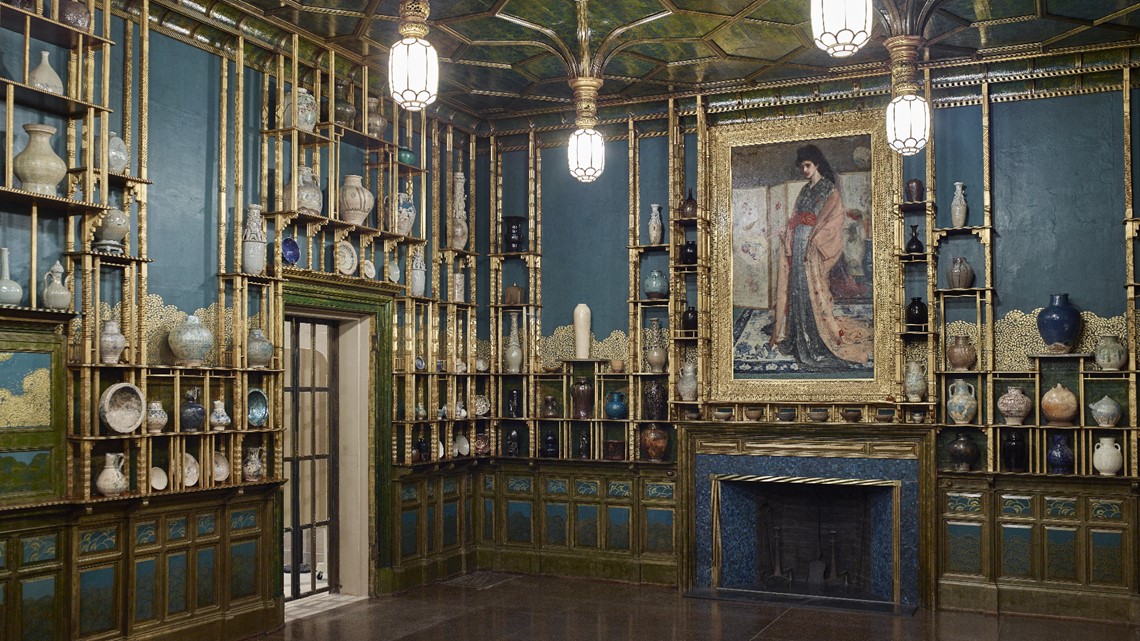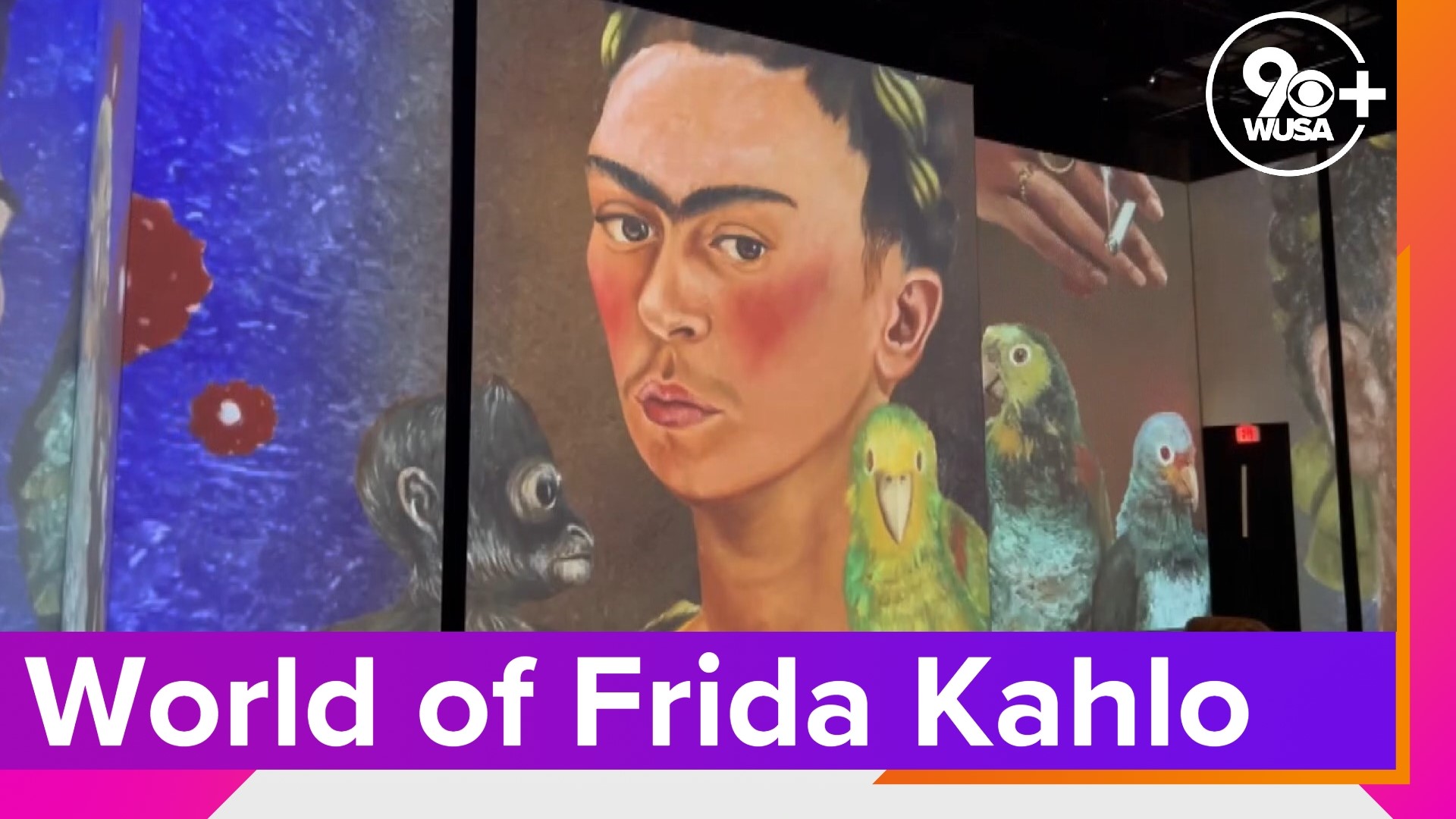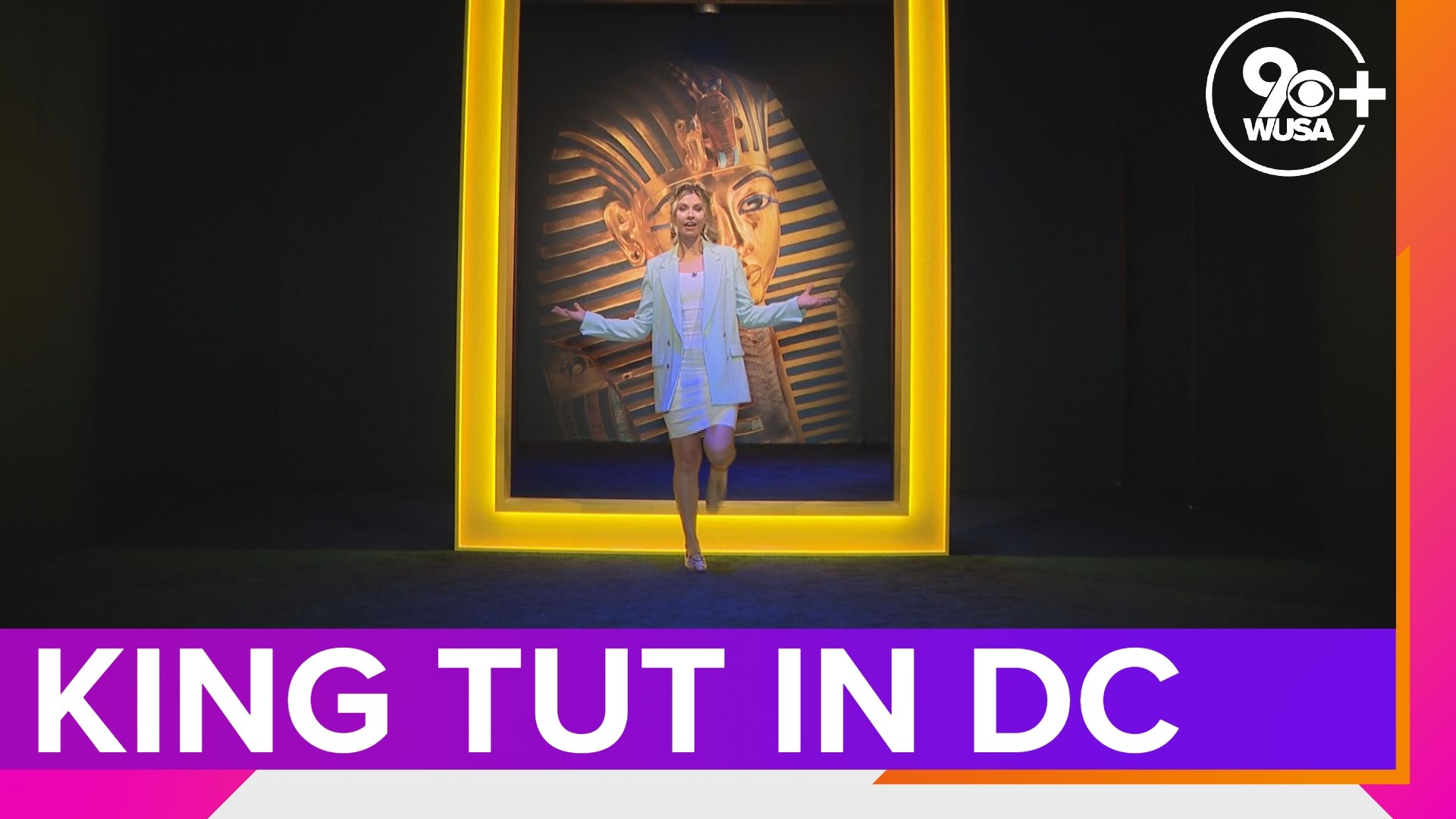WASHINGTON — The Peacock Room has a canvas for a ceiling, gilded shelves, walls littered with embossed leather, and a story alluring enough to match the decor.
It's a space that would have welcomed the well-connected guests lucky enough to be invited to dinner at the London mansion of a businessman named Frederick Leyland in the 19th century.
Today, everyone from longtime Washingtonians to wide-eyed tourists can be immersed in the artistry of the room-turned-masterpiece - along with a special new addition - this fall at the National Museum of Asian Art.
The ever-popular jewel of the Smithsonian museum has been closed since June for its first major conservation in 30 years. The space is now back to dazzling newcomers, who will find carefully crafted Asian ceramics covering its shelves; a collection from the museum's Freer Gallery of Art.
"If you're a first-time visitor, I envy you," shared Diana Greenwold, Lunder Curator of American Art, who worked on the summertime project. "It really is an unbelievable experience to walk into that space for the first time."


Although the room is now considered magnificent enough to be fit for a museum, it was initially at the heart of a feud between the owner and the artist.
Painter James McNeill Whistler created the room from his own vision, rather than the vision Leyland commissioned him to do. It also didn't help that Leyland suspected the artist was having an affair with his wife.
"[There was] a whole lot of stuff going on . . . but he kept the room exactly as it was until he passed away," Greenwold said. "He recognized its importance."
Visitors to the museum can experience the importance of Whistler's work for themselves, now in the style of its final owner.
In 1904, the museum's founder, American industrialist and art collector Charles Lang Freer, purchased the room for his Detroit home. He broke it down piece-by-piece, from the shutters to the walls, moving it across the Atlantic from its original British location.
"It's something that I think is relevant, you know, it has been for a long time . . . the whole issue of art and money," Exhibitions Conservator Jenifer Bosworth shared, speaking to the room's mural of warring peacocks that serves as an allegory of the two themes.
Finally, The Peacock Room arrived at its last destination at the Smithsonian. Post-restoration, the room is displayed as if it were in Freer's Detroit abode, with the near-250 ceramic pieces he collected; all works of art in their own right.


"That feeling of being completely immersed in this art experience as you walk into that space; it's indescribable . . . And having the opportunity then, in addition, to see those ceramics on view in that space is another kind of rare and true pleasure," said Greenwold.
The Peacock Room can be viewed in person at the museum on the National Mall, in the grassy area between the Capitol and the Washington Monument, or check it out virtually on the museum's website.
See more exhibits around the DMV!



